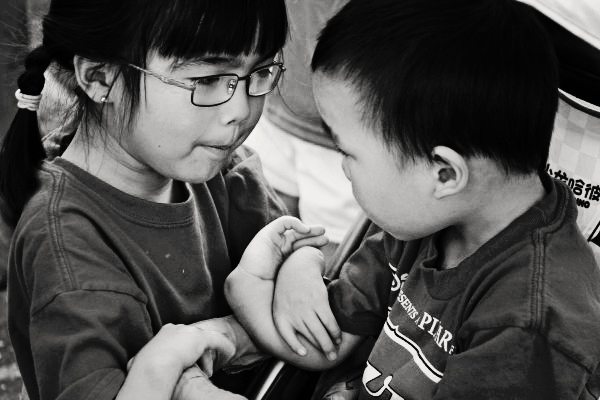The term special needs can sound scary. But it doesn’t have to stay that way. Our goal at NHBO is to equip and inform parents – replacing fear with knowledge – as they navigate the beginning stages of special needs adoption. And then encourage and support those home with their special needs kiddos.
We do much of this through our Family Stories. In addition to our regular content, each month (except January) we feature Family Stories focused on a specific group of Special Needs. Here are some links from previous years organized by category:
February: Heart – 2017 || 2016 || 2015
March: Blood Conditions – 2017 || 2016 || 2015
April: Central Nervous System – 2017 ||2016 || 2015
May: Vascular – 2017 ||2016 || 2015
June: Orthopedic – 2017 || 2016 || 2015
July: Craniofacial – 2016 || 2015
August: Infectious – 2016 || 2015
September: Skin Conditions – 2016 || 2015
October: Developmental – 2016 || 2015
November: Urogenital – 2016 || 2015
December: Sensory – 2016 || 2015
June is Orthopedic month here on NHBO. And all month long, we’ll be featuring family stories of children with needs like amniotic band syndrome, arthrogryposis, ectrodactyly, Poland syndrome, osteogenesis imperfecta and other orthopedic needs.
Over the years, many family stories related to these special needs have been shared. And – during this month focusing on the orthopedic system – we wanted to take a moment to look back at just a few of our favorites.
Let’s go.

Amniotic Band Syndrome

Amniotic Band Syndrome: one of the primary causes of deformities of the fingers and toes found in children in China is a result of Amniotic Band Syndrome (ABS). ABS results in congenital birth defects believed to be caused by entrapment of fetal parts (usually a limb or digits) in fibrous amniotic bands while in utero. This is a birth defect that in no way impairs the cognitive function of the baby; it is strictly a physical issue.
In this post from 2016, mom Julie shows how although initially afraid of her daughter’s special need, she came to see in her daughter’s hands the hands and feet of Christ.
Read more NHBO posts on this special need here.
Arthrogryposis
Arthrogryposis (or AMC): a term used to describe a number of rare, non-progressive conditions characterized by stiff joints and abnormal muscle development. It is also referred to as arthrogryposis multiplex congenita or amyloplasia.
In 2015, Katie shares how, after receiving a referral with a clubfoot diagnosis, another adoptive mom led her to learn more about arthrogryposis – a condition that can be associated with clubfoot, which her daughter did, in fact, have.
Read more NHBO posts on this special need here.
Clubfoot

Clubfoot (or talipes equinovarus): a common congenital birth defect present in approximately 150,000 newborns worldwide every year. When a child is born with the condition, the affected foot is turned upward and inward. If left uncorrected, the child would walk on the side or top of the foot. The goal of treating the clubfoot is to achieve a foot that looks and functions as much like a normal foot as possible.
Kelley shares information about clubfoot, as well as treatment options in the story of her son, Regis.
Read more NHBO posts on this special need here.
Dwarfism
Dwarfism (or skeletal dysplasia): a genetic condition that occurs in approximately 1 in 10,000 births. Achondroplasia is the most common form of skeletal dysplasia, representing about 70%, however there are over 200 different recognized forms of skeletal dysplasia. It is often characterized by disproportionately short arms and legs, but some forms result in proportionate limbs.
In 2013 Jodi shared the story of her two sons – both born with skeletal dysplasia.
Read more NHBO posts on this special need here.
Limb Differences

Limb Differences: a term used in reference to the congenital (present at birth) absence or malformation of limbs.
One of our contributors, Mandy, first shared about her daughter Lydia Grace in 2014. Since then Mandy and her husband Bryson have shared more about Lydia and her brother Barrett who joined the family in 2015.
Read more NHBO posts on this special need here.
Osteogenesis Imperfecta
Osteogenesis Imperfecta (OI): a genetic disorder characterized by fragile bones that break easily. Also known as “brittle bone disease,” a person is born with this disorder and is affected through his or her lifetime.
Jennifer, mom to two girls from China, shared about her older daughter, Olivia, who is thriving with OI. She includes frank information as well questions and answers to various things about this special need.
Read more NHBO posts on this special need here.
Radial Dysplasia

Radial Dysplasia or Radial Club Hand: a congenital (present at birth) limb difference resulting from the partial or complete absence of the radius, the long bone on the thumb side of the forearm.
Laine shared the adoption story of two of her children, Kimmie and Quan. Kimmie was born with radial club hands.
Read more NHBO posts on this special need here.
Scoliosis
Scoliosis: an abnormal curving of the spine – everyone’s spine naturally curves a bit, but people with scoliosis have a spine that curves too much.
Karen shared the story of adopting her daughter Rachel when she was five years old with a special need of scoliosis and pigeon chest.
Read more NHBO posts on this special need here.
If you are parenting a child from China with a special need and would like to share your story on No Hands But Ours, let us know. Just complete this short form and we’ll be in touch with you soon!

























Leave a Reply